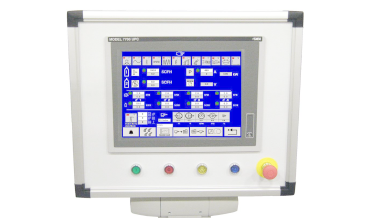LAR » Aplicativo » Water Chillers for Thermal Spray Coatings: Precision Cooling Solutions » How to Select the Optimal Chiller System for Thermal Spray Systems?
How to Select the Optimal Chiller System for Thermal Spray Systems?
--A Design Guide for Metco F4, Praxair SG-100, 7700, and JP-8000




1.The most Commonly uesd Thermal Spray Processes
Thermal spraying is a high-temperature process that involves spraying molten or semi-molten materials onto a substrate to form a coating. The most commonly used thermal spray systems include:
Medicoat F4: Atmospheric Plasma Spray (APS) system for high-precision coatings.
Praxair SG-100: Versatile plasma spray system supporting subsonic, Mach I, and Mach II modes.
Praxair 7700: Closed-loop plasma spray system known for high spray rates and quality coatings.
Praxair JP-8000: High-energy High-Velocity Oxygen Fuel (HP/HVOF) system for hard coatings.
These systems generate significant heat during operation, requiring efficient chiller systems to cool the spray gun, power supply, and control systems to ensure equipment safety and coating quality.
2.Thermal Spray System Startup Checks and Chiller Operating Conditions
Before starting the thermal spray system, the chiller must be operational and meet the following conditions:
- Water Temperature: Typically 10-25°C, depending on the system.
- Flow Rate: Varies by system, usually between 10-50 L/min.
- Pressure: 3-7 bar to ensure smooth cooling circuit operation.
Specific Requirements:
| System | Water Temp (°C) | Flow Rate (L/min) | Pressure (bar) | Pre-Run Time |
|---|---|---|---|---|
| Medicoat F4 | 10-20 | 10-20 | 3-5 | 5-10 minutes |
| Praxair SG-100 | 10-20 | 30-40 | 4-6 | 5-10 minutes |
| Praxair 7700 | 15-25 | 20-30 | 4-6 | 5-10 minutes |
| Praxair JP-8000 | 10-20 | 30-50 | 5-7 | 5-10 minutes |
3.The Heat Generation, Heat Load, and Recomended Refrigeration Capacity For the Thermal Spray System
Thermal spray systems generate substantial heat, part of which must be removed by the chiller to maintain stability. Below are the heat loads and refrigeration capacity needs for each system:
| System | Power (kW) | Heat Load (kW) | Refrigeration Capacity (Tons) | Recommended Chiller Type |
|---|---|---|---|---|
| Medicoat F4 | 20-40 | 5-10 | 8-15 | Water-cooled (preferred)/Air-cooled |
| Praxair SG-100 | 20-80 | 12-33 | 15-35 | Water-cooled (preferred)/Air-cooled |
| Praxair 7700 | 50-80 | 10-20 | 15-25 | Water-cooled (preferred)/Air-cooled |
| Praxair JP-8000 | 100-150 | 20-40 | 20-35 | Water-cooled (preferred)/Air-cooled |
- Heat Load Calculation: Heat load = Equipment power × (1 – thermal efficiency) × cooling component ratio.
- Refrigeration Capacity: Refrigeration capacity = Heat load + ambient heat + safety margin (typically 20-30%).
4.The Comparison of Air-Cooled and Water-Cooled Chillers
When selecting a chiller, air-cooled and water-cooled are the two main types. Below is a comparison of their advantages, disadvantages, and applicability:
| Feature | Air-Cooled Chiller | Water-Cooled Chiller |
|---|---|---|
| Cooling Method | Air cooling | Water circulation cooling |
| Installation | Simple, no water source or cooling tower needed | Complex, requires cooling tower and piping |
| Cooling Efficiency | Affected by ambient temperature, lower in summer | Stable, unaffected by ambient temperature |
| Initial Cost | Lower | Higher |
| Operating Cost | Higher (high fan energy consumption) | Lower (high energy efficiency) |
| Maintenance | Simple, but requires regular air duct cleaning | Complex, requires water quality management and cooling tower maintenance |
| Applicability | Small-scale, intermittent spraying | Large-scale, continuous spraying |
Optimal Choice:
- Water-Cooled Chiller: Suitable for all four thermal spray systems, especially in high heat load and long-duration operations (e.g., JP-8000 and SG-100).
- Air-Cooled Chiller: Suitable for small-scale or budget-constrained scenarios (e.g., low-power Medicoat F4 applications), but requires good ventilation.
5.Chiller Design Considerations For your Thermal Spray SYstems
When designing a chiller, you must consider the following key factors:
- High Flow and Pressure: Ensure the pump supports up to 50 L/min flow and 7 bar pressure.
- Temperature Control Precision: Maintain water temperature within ±1°C.
- Closed-Loop System: Use distilled or deionized water with filters and water quality monitoring.
- Durability: Use stainless steel or corrosion-resistant materials to handle dust and high temperatures in thermal spray environments.
System-Specific Requirements:
- Medicoat F4: Compact design, quick response.
- Praxair SG-100: Multi-mode adaptability, rapid start-stop capability.
- Praxair 7700: Data integration, efficient heat exchanger.
- Praxair JP-8000: Large-capacity water tank, redundant design.
6.How to choose the right chiller for your thermal spraying system? - Quick Calculator For you
Chiller Selection Calculator
Calculation Results
Heat Load: kW
Recommended Chiller Model:
Cooling Capacity: kW
Chilled Water Flow: L/min



